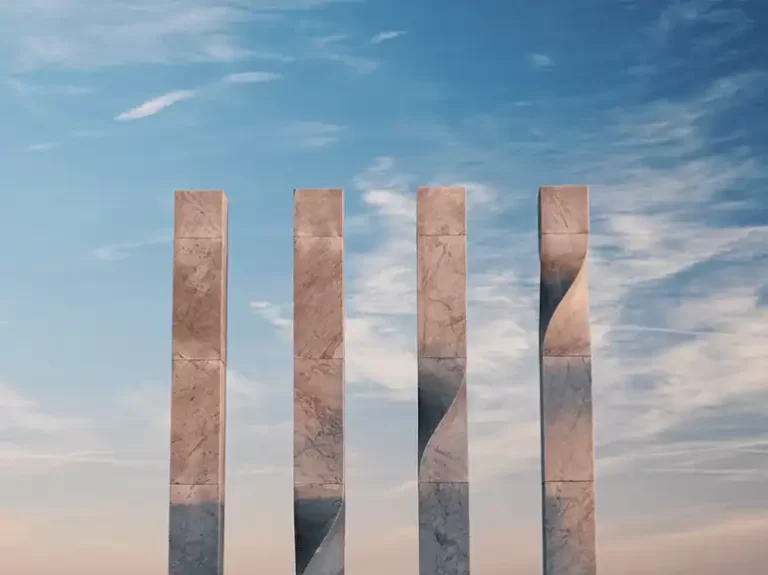How Do Geometry Transformations Work?
Discover the intriguing world of geometric transformations and the secrets behind rotations, translations, reflections, and dilations.

Have you ever wondered how video games are created or how GPS helps you find your way?
While we may just marvel at the wonders of modern technology and what it allows us to do, the truth is that all this stuff we mostly take for granted is actually founded on some very basic, fundamental math concepts that we’re talking about right here today.
Specifically, we’re looking into the branch of mathematics called geometry and exploring the intriguing world of ‘geometric transformations.
Allow us to explain.
Geometry Transformations - What's That?
In geometry, transformations are ways we can change shapes while still keeping some of their features the same. Imagine drawing a shape on a piece of cling film and then stretching, twisting, or flipping it!
The shape transforms and is now unique, but it still remains fundamentally the same.
There are four main types of transformations you need to know about:
- Translations
- Rotations
- Reflections
- Dilations
These might sound like big words, but they’re just fancy names for moves we can do to shapes! Let’s explore them individually in a little more detail.
Translations and Rotations - Sliding and Spinning!
First, let’s talk about translations and rotations.
The simple way to think of a translation is to imagine we’re sliding a shape from one place to another without turning it. It’s like sliding a book across a table – easy, right?
Rotations, on the other hand, are like spinning a shape around a certain point without changing its shape or size. Imagine turning a key in a lock or spinning a top. That’s what we mean by rotation!
These transformations are super helpful for understanding complex geometric problems, like when we’re finding patterns in shapes or solving tricky puzzles.
Reflections and Dilations - Flipping and Resizing!
Next, we’ve got reflections and dilations. A reflection is like flipping a shape over a line, just like how your face flips in a mirror! When we do a reflection, we create a mirror image of the shape.
Dilations are a little different.
They’re about changing the size of a shape without altering its shape. Imagine making a photocopy of a drawing and then enlarging it – that’s a dilation!
These transformations help us create and understand more complex patterns and figures, like kaleidoscopic images or making a model plane from a blueprint.
Real World Applications - More Than Just Numbers!
Transformations aren’t just cool math tricks, they’re super useful in the real world! For example, GPS uses transformations to translate coordinates from satellites into directions.
Engineers use them to rotate, reflect, and resize blueprints when designing buildings or bridges.
Even video game designers use transformations to make characters move!

The concepts of shape rotation and transformation are not just abstract mathematical principles; they have many practical applications in various fields in the real world. Let’s explore an example from computer graphics and animation, a field where these concepts are vital.
Consider a popular video game or animated film.
These digital environments are filled with objects, characters, and elements that move, rotate, and transform in complex ways. From the smallest bounce of a ball to the grand flight of a dragon, every single movement is meticulously crafted through the principles of rotation and transformation.
Here’s a more concrete example: Imagine a character in a video game who needs to turn around to face an opponent. This action requires a rotational transformation. The character’s image (a 2D or 3D model) must be ‘rotated’ around a specific point (often the model’s center), changing its orientation but not its shape or size.
Similarly, if that character needs to move from one spot to another (perhaps to dodge an attack), a translation transformation would be used. This shifts the character’s entire position in the game world without changing its size, shape, or orientation.
Also, if the character picks up a power-up that makes them grow larger or smaller, a scale transformation (a type of linear transformation) is applied. This changes the size of the character’s model without altering its shape or orientation.
All these transformations, including rotations, require a deep understanding of geometry and matrix mathematics. Without shape rotation and transformation principles, creating movement and interaction in video games, animations, virtual reality, and many other digital media would be impossible.
Interestingly, you can also see transformations in nature.
The way a butterfly’s wings are mirror images of each other? That’s reflection! And the way a baby grows into an adult while keeping the same basic shape? That’s dilation!
Wrapping Up
So, that’s the exciting world of geometric transformations! These four simple moves – translations, rotations, reflections, and dilations – are not only a vital part of understanding geometry, but they also help us in practical ways every day.
From designing buildings to navigating roads, understanding transformations is truly powerful. Plus, they make math a lot more fun!
So, next time you’re playing a video game or watching an animated movie, remember it’s all powered by geometry!